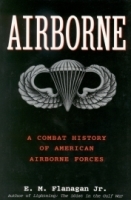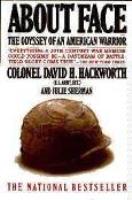 Allow me to state my prejudices up front. I am a former United States Army officer commissioned through the reserve officer training program (ROTC). I have my jump wings. For those who attended jump school at Fort Benning, I was A36 in class 37 - 76. I proudly wore my jump wings.
Allow me to state my prejudices up front. I am a former United States Army officer commissioned through the reserve officer training program (ROTC). I have my jump wings. For those who attended jump school at Fort Benning, I was A36 in class 37 - 76. I proudly wore my jump wings.
"Airborne: A Combat History of American Airborne Forces" by LTG Flanagan reminds me in some ways of a military after action report. It mentions people, equipment, backgrounds, TO & E and the never-ending officer name, his West Point class year, his class standing if high or low, and if he had and in the future will have a historically significant assignment. Rarely is an ROTC and never a battlefield or OCS commissioned officer mentioned.
The use of Medal of Honor citations throughout the book is good, though it significantly declined after the chapter on the Korean War. The book covers the period of pre World War Two to the end of World War Two in painful detail. At some points the level of detail bogs down and even gets as boring as reading a TO & E.
The best written part of the book was the coverage of Operation Just Cause in Panama. It reads almost like a newspaper account of the operation. Unfortunately, the coverage given to this operation was not duplicated in other post World War Two events. The brevity of coverage from the period 1946 to the end of the 1990s is shocking.
I would be interested in knowing when the airborne troops were integrated. Who was the first African-American to get his jump wings? Who was the first African-American to make a combat jump? While LTG Flanagan did mention the XVIII Airborne Corps does have a limited number of women in it in non-combatant positions, I would like to know when women first earned their jump wings and who was first. I know I had three women in my class at airborne school. Only token coverage was given to other branches of the service and Airborne qualified trooper.
The book needs updated to include the current Afghanistan and Iraq war. All in all, the book is a must read for those interested in US military history. Read and reviewed by Jimmie A. Kepler.



